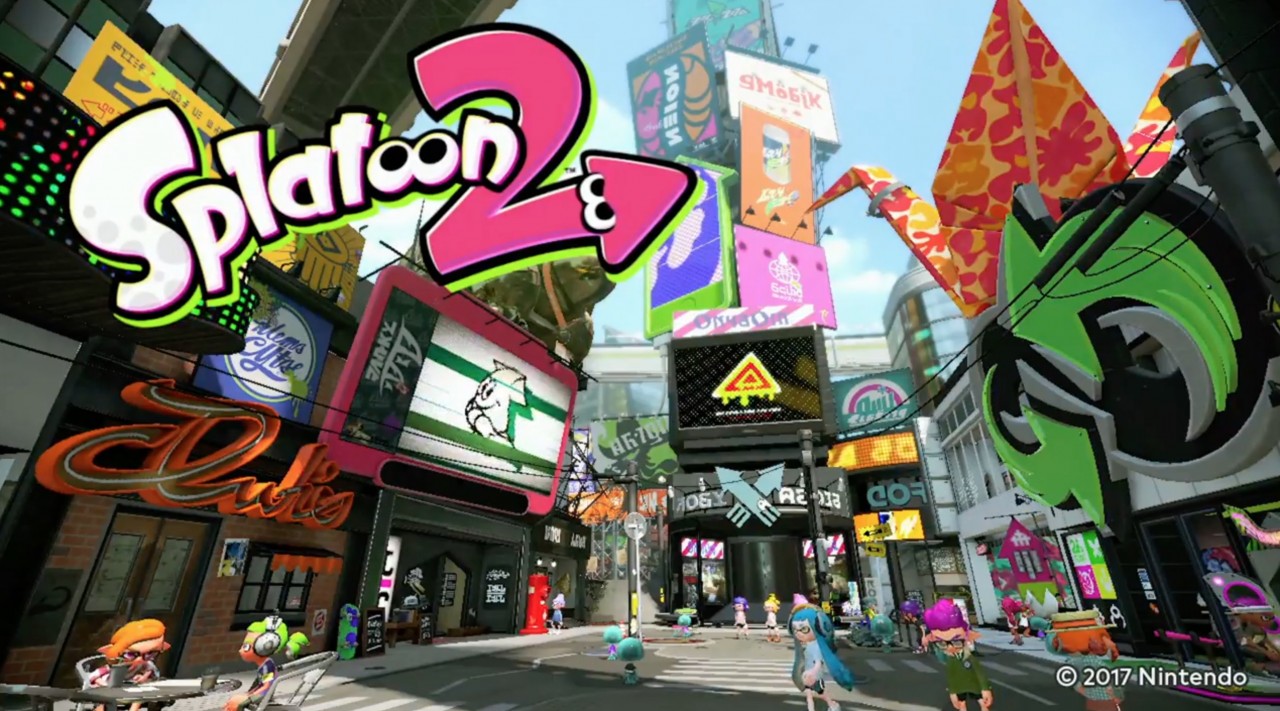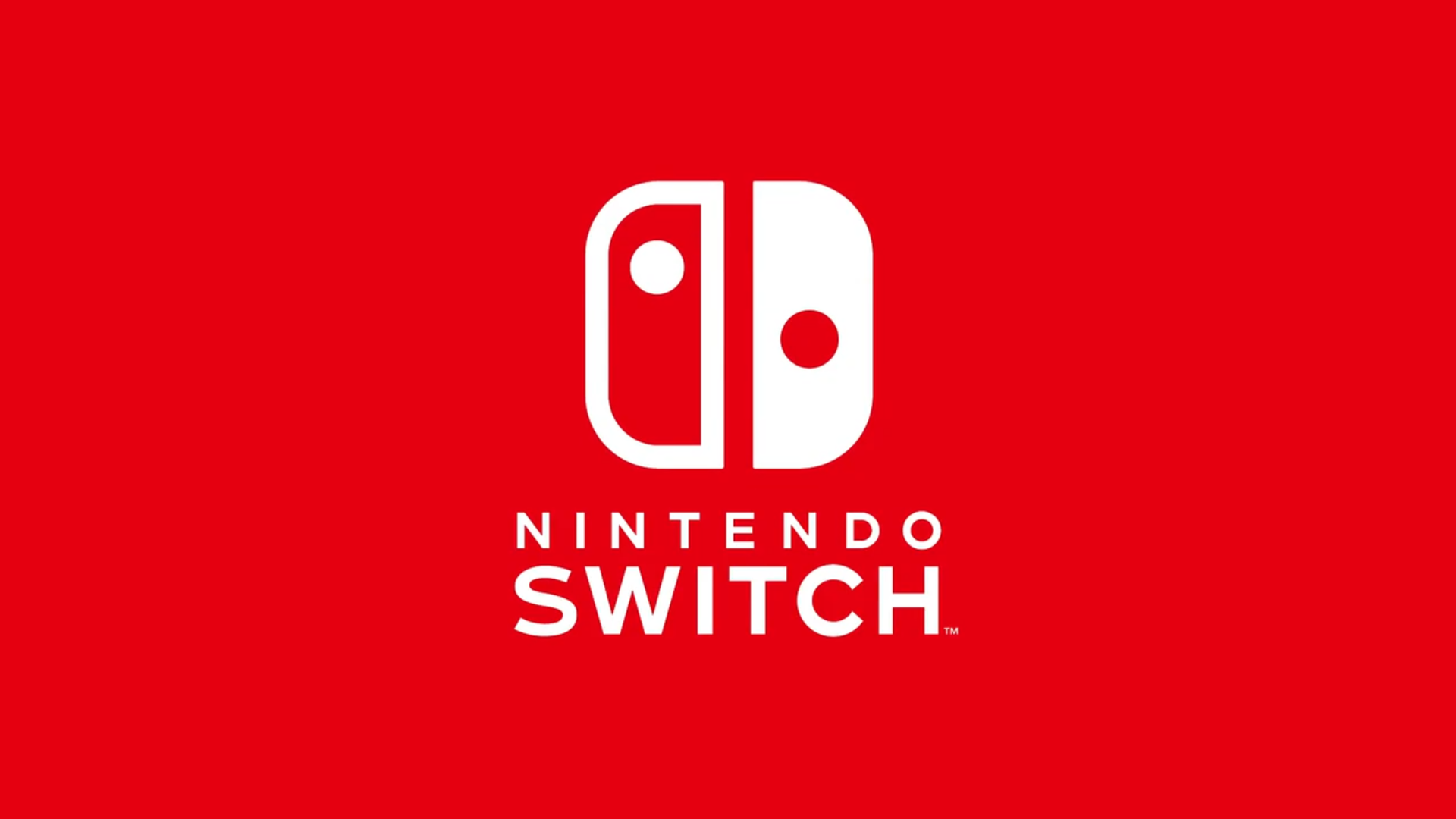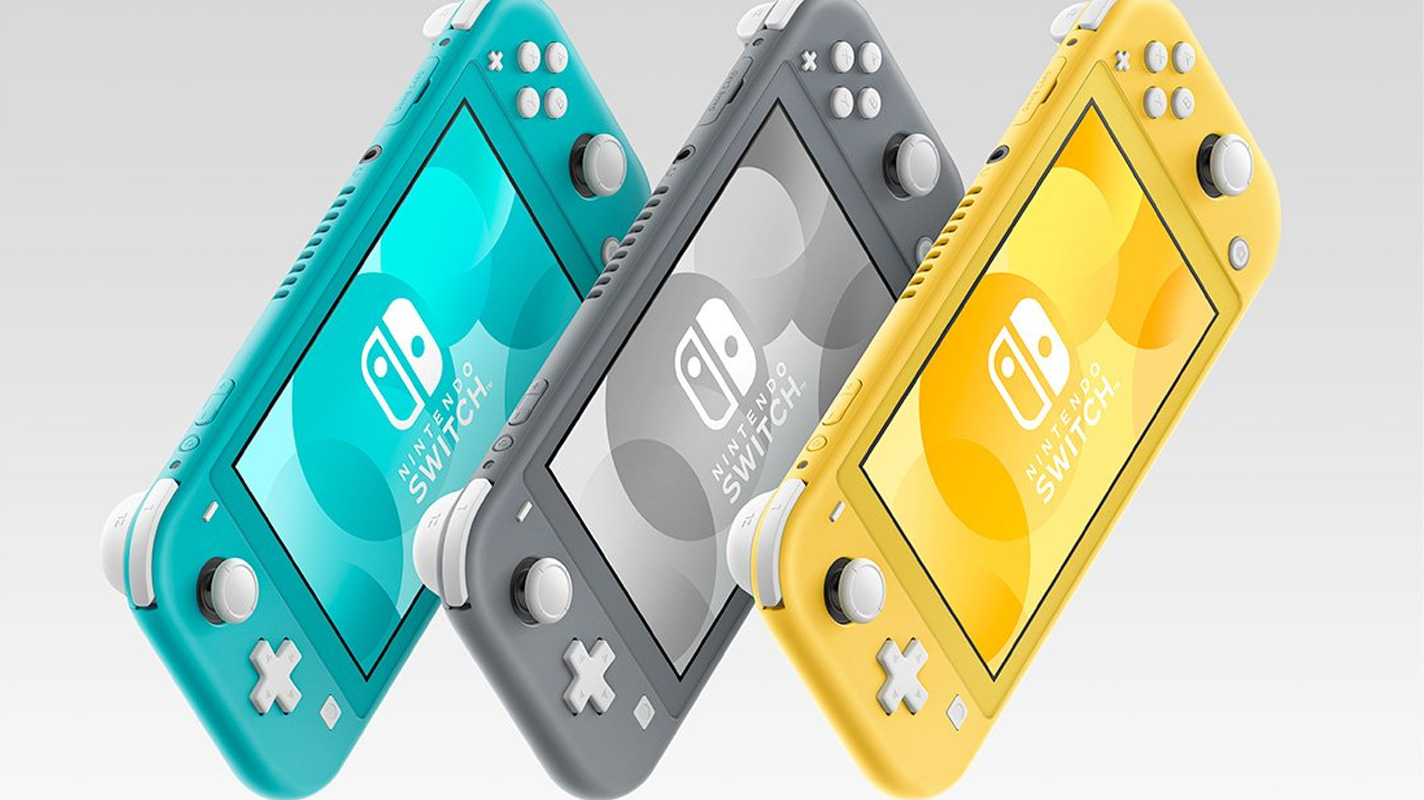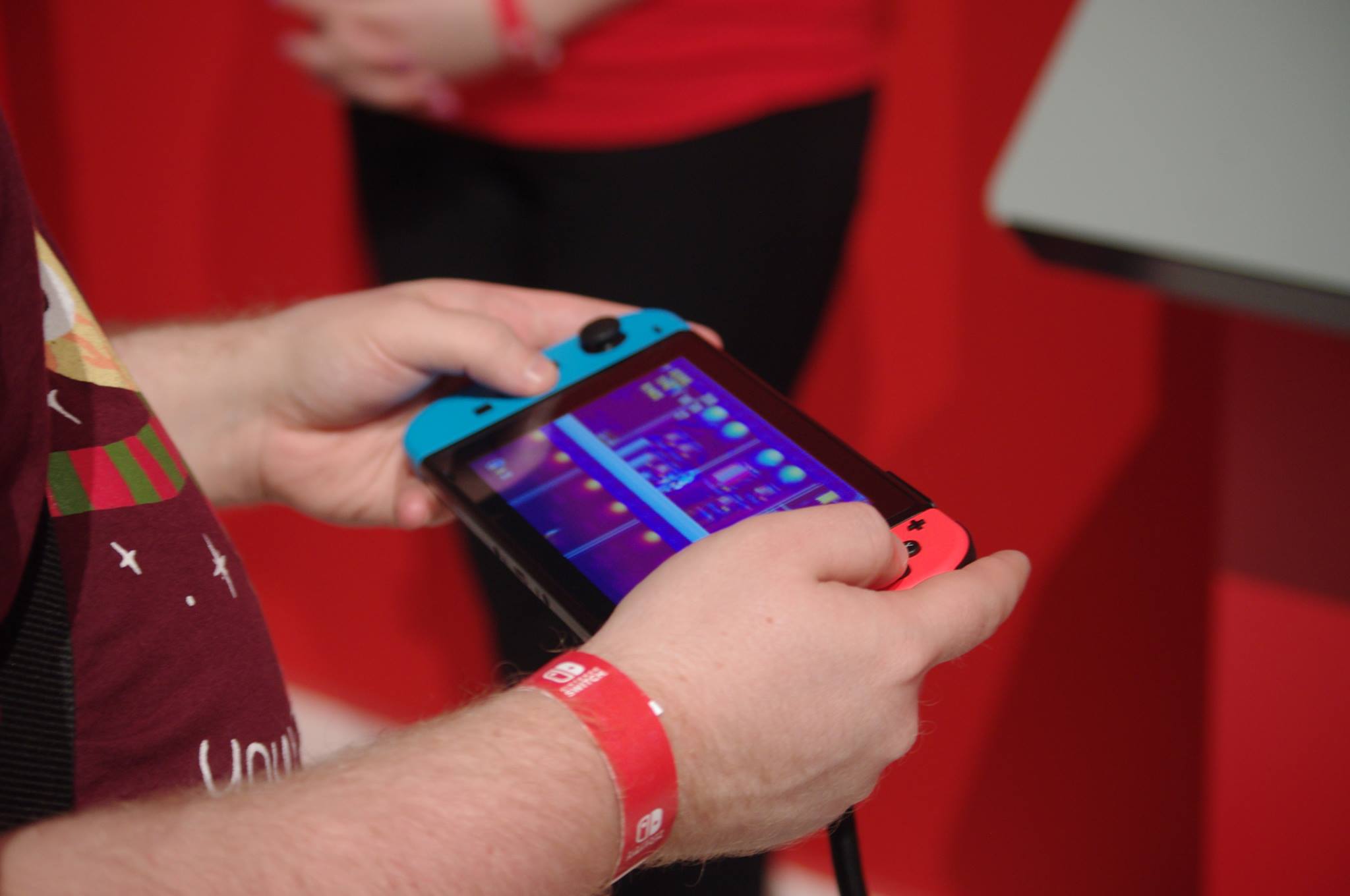
Ever since trying out the Super Nintendo Game Boy Player at a friend’s house as a kid I’ve waited for the day that there would be a Nintendo platform that would blur the line between handheld and home console. So when the Nintendo Switch was officially revealed to do exactly that, I was incredibly excited from the get-go. That excitement was somewhat tempered by Friday’s Nintendo Switch Presentation. Specifically, the lack of games announced for launch and the heavy focus on showing off motion controls and HD Rumble was frustrating. After going hands-on with the Switch and playing a variety of games, I’ve been sold on the device, but think that it should be releasing later than March with more games available.
At first sight the Switch was smaller than I expected, slightly wider than a WiiU gamepad but not as tall. The bezels around the screen are relatively small, giving the screen as much real estate as possible and helping to keep the overall device size to a minimum. The buttons from the Joy-Cons on either of the screen are small, similar in size to the buttons on a PlayStation Vita, with the analog sticks jutting out a bit further than the ones on the Vita. At first glance it looks like a well-designed device and is appealing to the eye.
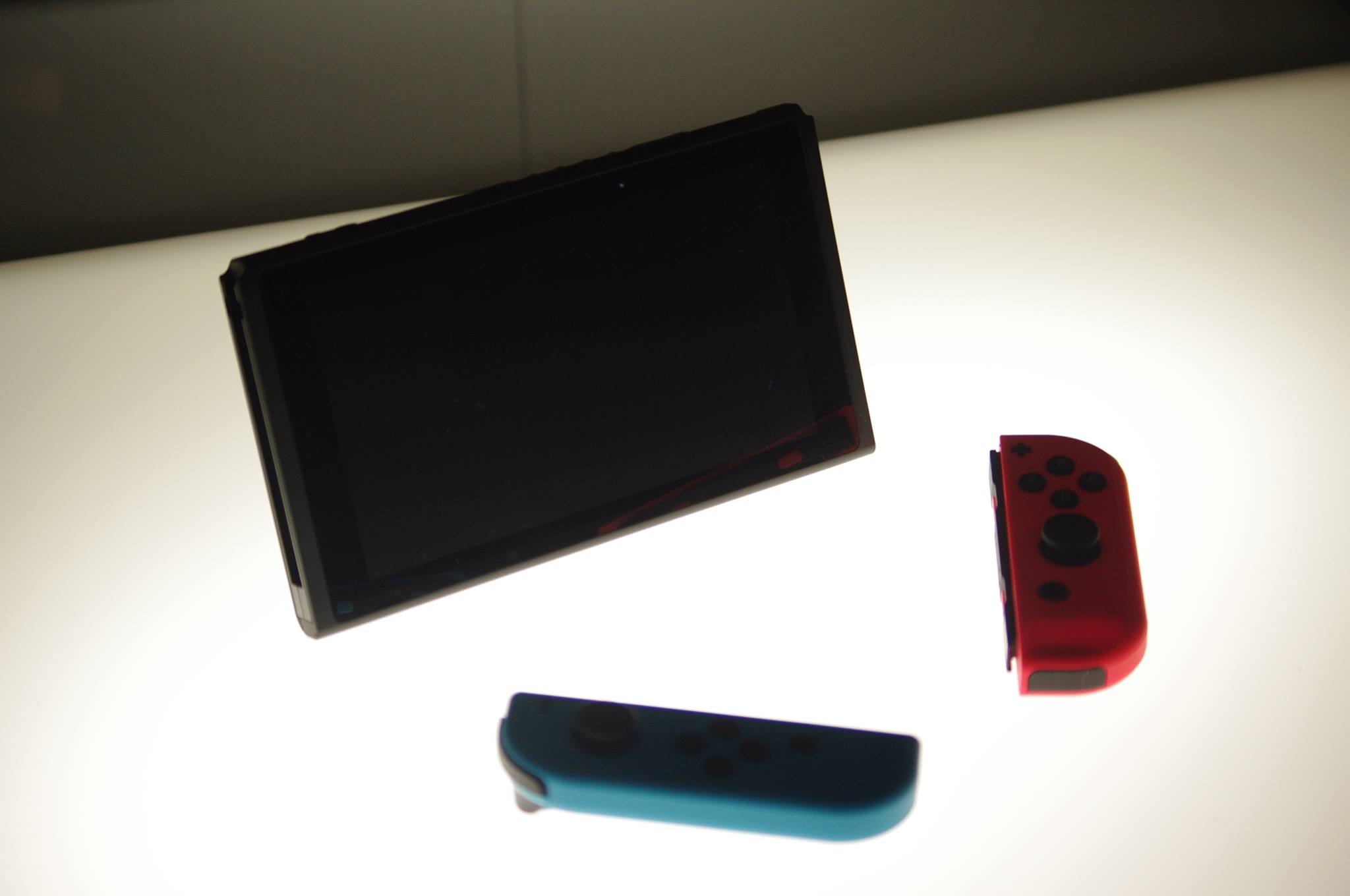
From here, it was time to try the handheld configuration of the Switch and play some Sonic Mania. It was here that I got a good look at the excellent quality of the screen in the Nintendo Switch. We still don’t know what type of panel Nintendo are using in the Switch, but it’s safe to say that it’s the highest quality screen they’ve put in a handheld device yet. My time with Sonic Mania highlighted just how bright and colourful games are on the Nintendo Switch’s screen are. The colours in the city stage that I played were incredibly vibrant and there was no glare from the bright overhead lights. I don’t know if the screen will fare quite as well in direct sunlight, but it seems to be the best chance yet of a handheld screen being usable outside.
Up until this point I’d had nothing but praise for the Switch, but as I began to play other games some niggling issues became apparent. The biggest of these is the placement of the right analog stick. While I’m a fan of displaced analog sticks, they really only work when they are inset in the controller. In the case of the Switch, the right analog stick is right next to the edge of the handheld, creating some uncomfortable situations as you attempt to reach it while playing. It’s not too bad in the handheld configuration, as you can balance the handheld in your hand and adjust accordingly, but when using the Joy-Cons on their own I found it uncomfortable. The small size of the Joy-Cons wasn’t an issue for me, but I also have small hands. I could see people with larger hands having some issues with reaching the buttons while using them on their own. This is alleviated somewhat by the wrist-straps, which add some extra width to the Joy-Cons and make them feel much more comfortable in your hands.
The Joy-Con grip really alleviates these problems, as the handholds at the back of the grip help to cause an inset for the analog sticks. It’s not quite as comfortable as a standard controller, but it’s well designed and is certainly good enough to use your main controller. I found that the best way to use the Nintendo Switch was with the Pro Controller. It fit into my hands well, has a full d-pad and puts the analog sticks in the most comfortable positions. If you have the option of buying the Nintendo Switch Pro Controller, I suggest doing so and making it your main controller when playing on the TV.

As part of my hands-on experience with the Nintendo Switch, I got to try a large number of the games that are slated to release for the console between launch and Winter. My personal favourite game was Splatoon 2, which is just as colourful and fun as its predecessor. The gyro controls in the Pro Controller, which I used to play the game, were responsive and the new super abilities were fun to use, as were the new Splat Dualies. Beyond those two additions, the remainder of the game was pretty much identical to the first Splatoon. There were only multiplayer matches available to play, so there is definitely more to come, but they didn’t really show much that couldn’t be seen in Splatoon.
The Legend of Zelda: Breath of the Wild solidified itself as the one experience that really sells the Switch as a must buy console, except that it’s also available on Wii U. The controls were fantastic and the painterly art-style is amazing to look at, both on the big screen and on the Switch’s screen. The combat is more fluid than in past Zelda games and the way the objects in the reacted as I hit them was wonderful. There was some foreshadowing of the story to come in my short time with the game, but it was enough to get me interested in the world and its history. If it wasn’t also coming out on Wii U, this would be enough for me to suggest people buy a Switch. The one issue I had with it was that there were still some slight framerate issues. It definitely wasn’t enough to sour the experience, but be aware that there is still some hitching in the open world.
1,2 Switch on the other hand, left me questioning who Nintendo thought playing mini-games without a screen would appeal to. I tried two of 1,2 Switch’s tiny mini-games and while they were conceptually interesting, in practice they were confusing and unresponsive. In Milk, you move the controller up and down, imitating the move of milking a cow while pressing buttons at the right time to trigger a vibration that indicates you’re milking. I found that the vibration regularly didn’t kick in for me while milking and the motion didn’t seem to always be mapped accurately. This was the same with Samurai Training, where my motions to try and catch a sword in the game seemed a little off. Each of these games lasted for roughly 5 to 10 seconds and unless there are significantly more than the 6 we could see, I can’t see how 1,2 Switch even begins to come close to the $69.95 Nintendo is charging for it.
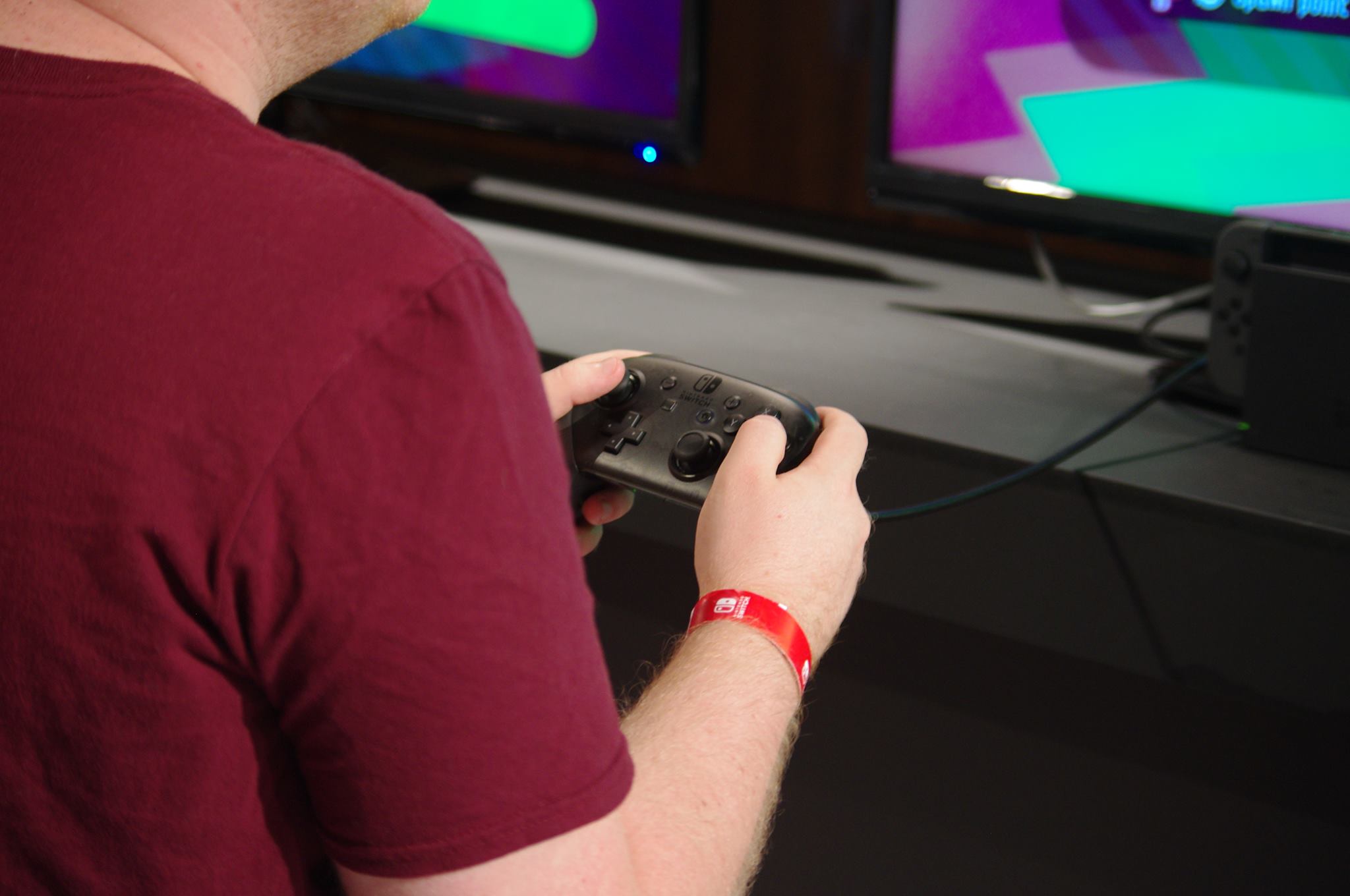
This wasn’t an issue in Arms however, where my motions quickly registered and caused the appropriate actions to be taken. Tilt the Joy-Cons to move, point them inwards to guard and thrust them out to punch, the controls were simple to understand and easy to use. Arms was surprisingly fun, with matches requiring a level of strategic thinking that I didn’t expect from the game. The characters were all interesting to look at and felt different in practice. If there was anything that sold me on the motion portion of the Joy-Cons it was Arms, which is interesting because the motion controls are optional.
Beyond the big games, I also got to go hands on with a few other titles. Mario Kart 8 Deluxe feels exactly like Mario Kart 8 on WiiU, which isn’t a bad thing, and doesn’t look particularly different either. The new battle mode was more fun to play than the original and the idea of being able to take Mario Kart 8 around with me is super appealing. Sonic Mania feels like a classic Sonic game and is what Sonic the Hedgehog 4 should have been. The game controlled exactly like a classic Sonic game and the remixed levels appeal to nostalgia while adding new features to keep them fresh. I experienced some moments of slowdown while playing, but as long as this is ironed out pre-launch than this is the most compelling Sonic game since Generations. Super Bomberman R falls into a similar category, where it feels much like a classic Bomberman game. I had some issues with the controls not being as responsive as I would have liked and the 3d graphics aren’t amazing to look at, but it seems to be a solid entry into the franchise. Disgaea 5 Complete is Disgaea through and through. If you’ve already played Disgaea 5 then the only appeal here is being able to take the game on the go, but if you haven’t and you’re after a bombastic strategy RPG filled with humour, then this is the game for you.
Overall, I was impressed with the hardware that is the Nintendo Switch. It nails the concept of a home console that can be taken on the go, with a solid build and multiple control styles to boot. The screen looks incredible and the controls are mostly great, although the right Joy-Con is frustrating. The real issue for the Nintendo Switch is the games that are coming to it, or more accurately, the lack thereof. What is there is fun, with Splatoon 2 being the standout, but that won’t available until sometime in the Winter. Mario Kart 8 Deluxe was great, but won’t be available until April 28. The Legend of Zelda: Breath of the Wild is incredible and available on launch day, but that’s also available on a platform you may already own. I love the promise of the Nintendo Switch, but based on the software currently announced for it, I can’t help but feel that it’s being launched prematurely. If you want to play Super Bomberman R as soon as possible and want the best version of The Legend of Zelda: Breath of the Wild then jump on board at launch. Otherwise, I suggest waiting until later in the year.
The Nintendo Switch will release in Australia on March 3, 2017 for a RRP of $469.95.

